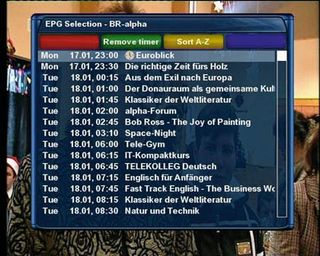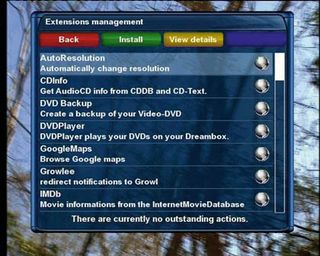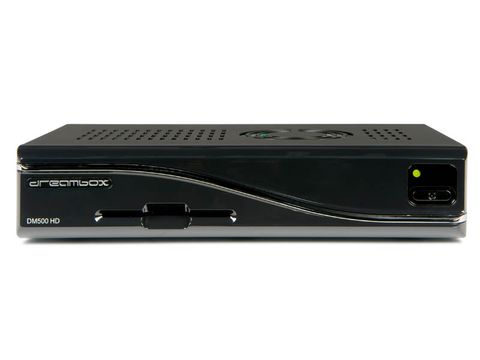TechRadar Verdict
Pros
- +
Physically compact
- +
AV quality – especially from HD
- +
Responsive
Cons
- -
Rather expensive
- -
No display or front panel controls
- -
No hardware blind search
Why you can trust TechRadar
A few short years ago, Dream Multimedia – progenitor of the Linux-based set-top box – started 'downsizing' its products. Literally. Many of the company's single-tuner receivers were shrunk to something not much bigger than an old-school videocassette, and powered by an external mains unit.
They ranged from the DM100, a basic non-Linux satbox, to the DM800 HD PVR which, despite its small size, was able to handle HD channels and accommodate an internal HDD.
In the middle was the DM500, a standard-def Linux receiver fettered by its PVR non-upgradeability. Its key advantage was its basis in Linux, which opened up the wonders of web-streaming, third-party firmware support and functionality-adding 'plug-ins'. It also sported a card slot.
The DM500 has now been replaced by the DM500 HD, which redresses the limitations of the original. DVB-S2 and HD are now supported. It's PVR upgradable by plugging in an external eSATA hard drive and will work with infrared keyboards.
Loyalty to Linux, and all its benefits, is preserved; as standard, the DM500 HD runs the newer Enigma2 firmware.
Build and connectivity
Size apart, the newer model differs little in appearance from its predecessor. You still get a card reader and onboard Dreamcrypt CAM. With different firmware or plug-ins it could emulate other CAMs – just as well, given the lack of a CI slot. Other front panel features are restricted to the standby button and a couple of status LEDs. There are no menu controls or channel display.
Perhaps the most significant difference is the top-mounted cooling fan. Mercifully, this runs very quietly; indeed, its running speed can be changed in the setup menus.
Changes are also apparent on the rear panel. The DVI-D port of previous HD Dreamboxes has been swapped for a HDMI socket capable of outputting resolutions up to 1080i. You also get an RGB Scart, which represented the original 500's highest-quality option. The Scart socket can also deliver composite or component and there's an optical digital audio output.

A mini-USB port is intended solely for 'service' functions like firmware upgrades. SMS tells us the receiver can be hardware modded to support USB hubs (remember this will invalidate your warranty) but 'out of the box' you'll need an eSATA drive for PVR and media playback functions.
There is also an analogue modem which seems redundant in the face of the Ethernet port. The single-tuner input is not accompanied by a loopthrough output. The power supply is a travel-friendly 12V variety.
Internally, the DM500 HD is busy but neat. The DVB-S/S2 tuner module is soldered to the main board so it can't be easily replaced with a DVB-T or DVB-C module. The main board also contains the card reader, and the main Broadcom 'system on a chip' (built around a 400MIPS processor) is heatsinked.
Unusual is the internally accessible SIM slot, into which has been glued some kind of Dreambox security device; these receivers have, after all, been relentlessly pirated.
A second daughterboard contains the modem, while a metal bracket fitted just above the main chip sports the cooling fan.
Setup
The default Enigma2 firmware's step-by-step wizards guide you through the process of installing the receiver. They cover language, TV system, time zone, initial dish configuration and searching for channels – all parameters that can be modified later on via the setup menus.
Searching can take place on single transponders or complete satellites – all channels, or just free ones, can be found and stored. FEC and symbol rate can be specified for manual searches, but you cannot enter PIDs. It's a pity that hardware blind search is missing, although a plug-in could, in theory, add blind search.
A welcome plug-in that was pre-installed on the review unit is the satfinder, with its large signal strength/quality bar graphs and ability to select a specific satellite/transponder.
DiSEqC capabilities are good; in addition to 1.2, this receiver supports simple switchboxes (1.0) and USALS. All of the usual controls for dish movement are supported – these use the handset's coloured buttons. With a motorised dish, you'll be able to conduct automated multiple satellite searches.
Other menus branching out from the main one look after all manner of receiver functionality. In the AV menu, you can choose various resolutions, refresh rates and aspect ratio defaults – lip-sync, upscaling sharpness and audio modes are also adjustable here. We're impressed with the test pattern generator, a pre-installed plug-in that's provided as a TV contrast/brightness adjustment aid.
Other menus cater for parental controls, plug-in installation and initialising (formatting) your external HDD so that recordings can be made or timeshift engaged. The overall feel of the receiver can be changed to your tastes too; in addition to 'skins', a 'customise' menu will let you tweak receiver behaviour.
Basic use
You can sequence through channels with the joypad's left/right keys and channels are arranged as 'bouquets' (channel lists), which are accessed in a 'channel selection menu'. From here, you can sort the list by 'all' (everything, sorted alphabetically), by satellite/provider bouquets, or favourites. The latter are essentially user-defined bouquets – and it's easy to add to, or delete from these as taste dictates. Indeed, deleting unwanted channels or entire bouquets is a cinch.

Pressing the 'info' button yields an EPG-derived description of the current programme. The EPG, which supports now-and-next and seven-day schedules, is also accessible from here. Presented as a basic text list, it offers two modes.
The first focuses on one channel's schedule, while the other allows you to see what multiple channels are offering within a given timeslot. If the relevant EPG data is in the machine, the name of the show being broadcast by the channel is shown adjacently, together with a running-time bar graph.
PVR and multimedia
The timer can be programmed from the EPG. Manual timer programming is also allowed, and you can specify how a recording should stop. Interestingly, you can watch one channel while another records – provided that both are on the same transponder.
The channel list shows you which channels are available – ones that can be selected are highlighted, while most that can't are greyed out. Nevertheless, this is unexpectedly flexible for a single-tuner unit. When a recording is in progress you can view either this or an existing one selected from a list.
Timeshifting is also possible. The timeshift files aren't shown in the recording list, but logging into the receiver using a network FTP (File Transfer Protocol) client reveals their presence. Like the recordings themselves, timeshift files take the form of transport streams containing all available channel data (teletext and DVB subtitles, if present, are preserved).
One of the many available plug-ins is a media player. Although the lack of a USB port reduces its usefulness, it's easy to transfer multimedia files across to the external HDD via FTP. It may be compatible with DivX/XviD, MPEG and MKV/X.264 video (as well as MP3 audio), but the scaling leaves something to be desired.

Some content doesn't fill the screen because it's being displayed at native resolution – and there's no zoom function to redress the balance. Although the media player doesn't recognise photos, a separate 'PicturePlayer' plug-in can take care of those.
Typing the receiver's address into the browser presents you with Enigma2's web interface. Channels can be remotely selected from here. You can also invoke recording, access EPG info and schedule timer events. If you have VLC Media Player installed on your computer, then you can start viewing the currently tuned channel in a window.
Existing recordings stored on the external HDD can also be streamed or downloaded via the network – even while the machine records another programme. Theoretically, you could schedule recordings and play/transfer content from anywhere in the world.
Performance
The tuner reliably held onto channels from Astra 1x and Hot Bird, received with a small (45cm) dish and multi-LNB – and so sensitivity isn't a worry. Channel selection is reasonably fast – the DM500 HD switches between adjacent services in around two seconds.
We judged the user interface and menu system to be pleasantly responsive in use, and search speeds are more than adequate. Pauses of up to a minute during the scanning process were, however, noted, though the job is always completed. These pauses are more common during FTA-only searches, thereby explaining our test results.
Audio-visual quality is superb, from HD and SD channels alike. HD channels are particularly crisp, with vibrant colours and good contrast range.
Follow TechRadar Reviews on Twitter: http://twitter.com/techradarreview

Microsoft Graph is becoming a popular target for hackers

New Intel Arrow Lake leak alleges no Thunderbolt 5 support for Z890 motherboards

World's largest HDD company wants to launch massive 60TB SSD in 2024 — WD CEO spills beans on solid state roadmap as he divulges that enterprise customers want much bigger capacities, fast
